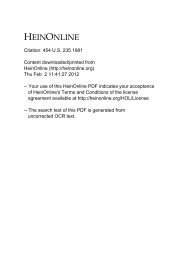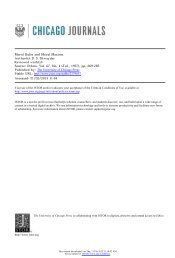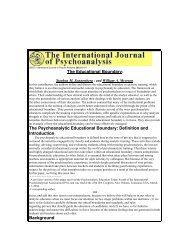Copyright by Gregory Krauss 2007 - The University of Texas at Austin
Copyright by Gregory Krauss 2007 - The University of Texas at Austin
Copyright by Gregory Krauss 2007 - The University of Texas at Austin
Create successful ePaper yourself
Turn your PDF publications into a flip-book with our unique Google optimized e-Paper software.
moment. <strong>The</strong> bureau had already been through a period <strong>of</strong> instability <strong>at</strong> the end <strong>of</strong> the<br />
Carter administr<strong>at</strong>ion. In 1979, Senior Deputy Assistant Secretary <strong>of</strong> St<strong>at</strong>e Mark<br />
Schneider had left the bureau, and in 1980, Derian had taken a leave <strong>of</strong> absence.<br />
Other staff people were also leaving <strong>at</strong> the end <strong>of</strong> the Carter administr<strong>at</strong>ion due to the<br />
upcoming election and the perception th<strong>at</strong> the administr<strong>at</strong>ion had lost its human rights<br />
focus. 105 <strong>The</strong> appointment <strong>of</strong> Stephen Palmer as Acting Assistant Secretary <strong>of</strong> St<strong>at</strong>e<br />
kept the bureau aflo<strong>at</strong>, but it continued to languish.<br />
<strong>The</strong> true test <strong>of</strong> the durability <strong>of</strong> the bureau was whether it could survive a<br />
change in administr<strong>at</strong>ion. When Reagan took <strong>of</strong>fice in January 1981, morale had<br />
never been worse in the human rights bureau. As noted above, Reagan initially was<br />
against a strong human rights policy; he had nomin<strong>at</strong>ed Ernest Lefever, an opponent<br />
<strong>of</strong> drawing human rights into U.S. foreign policy, to head the bureau. Bureau <strong>of</strong>ficials<br />
admitted th<strong>at</strong> during the Lefever episode the human rights bureau was the “laughing<br />
stock” <strong>of</strong> the St<strong>at</strong>e Department. 106 Lister l<strong>at</strong>er recalled th<strong>at</strong> “there were some, in and<br />
out <strong>of</strong> government, who assumed th<strong>at</strong> our human rights policy was finished.” 107<br />
Lister joined the human rights bureau in July 1981. 108 He was followed in<br />
December <strong>by</strong> Reagan’s second nominee, Elliot Abrams, who had written the<br />
memorandum outlining wh<strong>at</strong> would be Reagan’s new human rights approach. 109<br />
Abrams, in his early 30s, was a conserv<strong>at</strong>ive Harvard law school gradu<strong>at</strong>e who had<br />
worked on the staffs <strong>of</strong> Democr<strong>at</strong>ic Sen<strong>at</strong>ors Henry “Scoop” Jackson and P<strong>at</strong><br />
Moynihan. 110 He had joined the Reagan campaign in 1980, and in the first months <strong>of</strong><br />
78

















